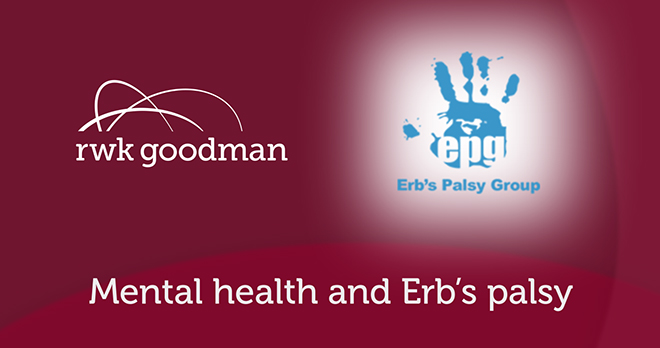Making an Erb’s palsy claim

If you or your child has Erb’s Palsy you’ll doubtless have concerns about how you or they will manage into the future. We understand you are striving for the best quality of life possible.
Our experienced medical negligence team can focus quickly on the key issues in the case and proceed to instruct trusted independent medical experts to provide their opinions on the care provided and the cause of the brachial plexus injury.
Some examples of substandard medical care that can lead to brachial plexus injury during childbirth are:
- risk factors for shoulder dystocia were evident but not discussed with the mother (or planned for). Risk factors include a larger than average baby and similar problems in- a previous delivery;
- the established emergency steps for managing shoulder dystocia (freeing the baby’s shoulders) were not followed or properly executed.
Cases can be funded either by Legal Aid – where your case meets their criteria – or through a Conditional Fee Agreement (CFA). A CFA is more commonly known as a ‘no win no fee’ agreement, which means that we get paid nothing if the claim is unsuccessful, and in return (if the claim is successful) whilst the Defendant will pay the majority of the costs we get a percentage increase on our fees (known as a success fee). You will also pay a part of any insurance policy premium to cover your claim
What is Erb’s palsy?
Erb’s palsy occurs when the patient’s arm is affected as a result of injury to the brachial plexus and specifically nerves C5, C6, C7, C8 and T1. Symptoms can vary depending on the affected nerve and the severity of injury. Put simply, it is the result of one or both of the baby’s shoulders getting stuck (impacted) against the mother’s pelvis after the head has been delivered.
Who is Erb-Duchenne?
French neurologist Guillaume Benjamin Amand Duchenne and German neurologist Wilhelm Heinrich Erb are jointly credited for first describing the condition.
Why doesn’t my baby move one arm as much?
There are several potential reasons as to why a baby is not moving one arm as much. These include developmental delays, Erb’s palsy and others.
Why is called waiter’s tip deformity?
Patients with Erb’s palsy present with the arm hanging limply from the shoulder with adduction at the shoulder, internal rotation of the upper arm, pronation of the forearm and an outward direction of the palm. The name “waiter’s tip” describes this as a waiter discreetly awaiting a tip.
What is the difference between Erb’s palsy and Klumpke’s palsy?
Erb’s palsy occurs when injury is sustained to the upper part of the brachial plexus whilst Klumpke’s palsy occurs when the injury is sustained by the lower part of the brachial plexus. The most common cause of Klumpke’s palsy hyper-abduction trauma.
What nerve is damaged in Erb’s palsy?
The brachial plexus is formed of cervical nerve roots C5, C6, C7 and C8 as well as thoracic nerve T1. These roots combine to form three trunks, namely the upper trunk (C5 and C6), the middle trunk (C7) and the lower trunk (C8 and T1). Erb’s palsy occurs when the upper trunk of the brachial plexus, namely cervical nerves 5 and 6 are damaged.
Is brachial plexus injury permanent?
Brachial plexus injury is permanent and there is no cure for it . Whilst there are treatments such as physiotherapy and surgery, the aim of these treatments is to optimise movement and to alleviate the symptoms of brachial plexus injury as opposed to cure it.
What is the difference between Erb’s palsy and brachial plexus injury?
The brachial plexus is a “super-highway”of nerves which run down the side of the neck, behind the collarbone and down each arm. The brachial plexus can be injured in many ways including contact sports, birth, accidents, tumours and cancer treatment.
Erb’s palsy is a type of brachial plexus injury sustained at birth which arises when the baby’s shoulder gets stuck in the birth canal.
What is the most common cause of brachial plexus at birth?
The most common cause of shoulder dystocia at birth is the persistent anterior-posterior position of the fetal shoulders as they enter the pelvic inlet or descent of the fetal shoulders simultaneously. This usually occurs when a patient has a large baby, when a patient has an asymmetric baby (usually happens with mothers with diabetes) or when a patient has a precipitous delivery (when the baby is born within three hours of regular contractions starting).
What are the risk factors for brachial plexus palsy?
Common risk factors of neonatal brachial plexus injury include:
- maternal diabetes;
- previous shoulder dystocia;
- fetal Macrosomia (having a large baby);
- delivery of a large birthweight infant;
- increased maternal weight gain;
- maternal obesity;
- intrauterine fetal death.
Are there any warning signs for shoulder dystocia during labour?
Medical professionals are required to uphold a standard of care associated with set guidelines. The guidelines set perimeters within which shoulder dystocia should be noted during birth. Shoulder dystocia should become apparent to a medical professional as soon as the baby’s head comes out and then retracts; if more than one minute has passed since the baby’s head emerged but the body hasn’t or if a medical intervention is required to complete delivery.
Who is to blame for Erb’s palsy? Is Erb’s palsy the doctor’s fault?
Erb’s palsy is not always a result of negligent hospital treatment, as it can be an unavoidable consequence of birth; however, if medical professionals fail to follow set guidance to minimise the risk of a nerve injury to the baby, then it may be possible to establish that a breach of duty occurred. This can be a breach of duty on behalf of any medical professional responsible for overviewing the pregnancy or present at birth.
Can you sue the NHS for cerebral palsy and Erb’s palsy?
In order to bring a claim for damages against the NHS or other treatment providers, a claimant must satisfy two legal tests, namely breach of duty and causation. Breach of duty refers to the failure of a medical professional to uphold a reasonable standard of care, when compared to a reasonably qualified specialist in their field of expertise. Causation refers to injury or harm suffered as a result of breach of duty.
One of the most common examples of breach of duty in Erb’s palsy claims are cases in which risk factors for shoulder dystocia were evident, but the mother was not advised of the potential adverse outcomes or the possibility of caesarean section and as a result injury occurred. Another example are cases in which the established emergency steps for managing shoulder dystocia were not followed appropriately.
How many years do you have to sue the NHS?
Clinical negligence claims have a strict limitation date of three years less one day from the date of knowledge. The date of knowledge is the day you first became aware of potential negligence. Once that period has passed, you may be statute barred from investigating a potential claim for negligence. For children under age 18, the limitation date does not start running until their 18th birthday.
It is important to say that clinical negligence is a very complex area of law and cases often take years to resolve. Cases concerning children take even longer to resolve as often clinical negligence specialists have to await for the claimant to reach maturity in order to fully explore the potential damages.
There are rare circumstances in which limitation can be extended or suspended. In order to avoid any potential risk, please seek advice from a legal specialist as soon as you consider that you or a loved one may have suffered injury as a result of negligence.
If your child is living with Erb’s palsy as a result of medical negligence at birth, our legal specialists may be able to help you seek compensation.
Call now





